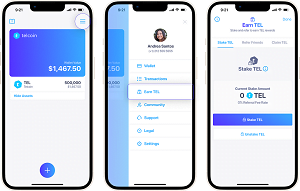How to Mine Cryptocurrencies: A Beginner’s Guide

How to Mine Cryptocurrencies: A Beginner’s Guide
Cryptocurrencies are digital assets that use cryptography to secure transactions and control the creation of new units. They are decentralized, meaning that no central authority or intermediary controls them. Instead, they rely on a network of computers, called nodes, that validate transactions and maintain a shared ledger, called a blockchain.
One way to participate in the cryptocurrency network is by mining, which is the process of creating new blocks for the blockchain and earning rewards in return. In this blog post, we will explain what mining is, which cryptocurrencies can be mined, whether it is legal and easy, and how much you can make from it.
What is Bitcoin Mining?
Bitcoin is the most well known cryptocurrency, created by an anonymous person or group using the pseudonym Satoshi Nakamoto in 2009. Bitcoin uses a proof-of-work (PoW) consensus algorithm, which requires miners to solve complex mathematical problems, called hashes, to verify transactions and create new blocks.
Each block contains a reference to the previous block, a timestamp, a nonce (a random number), and a list of transactions. The hash of each block must start with a certain number of zeros, which determines the difficulty of the problem. The difficulty adjusts every 2016 blocks (about two weeks) to keep the average time between blocks at 10 minutes.
The first miner who finds a valid hash for a block broadcasts it to the network and receives a reward of newly created bitcoins (currently 6.25 bitcoins per block) and transaction fees. The other miners then validate the block and add it to their version of the blockchain. The longest chain of valid blocks is considered the true state of the network.
Mining requires a lot of computing power and electricity, as miners compete to find the next block. To increase their chances of success, miners often join pools, where they share their resources and rewards. Alternatively, some miners use cloud mining services, where they rent hashing power from third-party providers.
Which Cryptocurrencies Can Be Mined?
There are thousands of cryptocurrencies in existence, but not all of them can be mined. Some cryptocurrencies use different consensus algorithms that do not require mining, such as proof-of-stake (PoS), proof-of-authority (PoA), or proof-of-space (PoS). These algorithms rely on other mechanisms to secure the network and distribute rewards, such as staking coins, validating identities, or providing disk space.
Some of the most popular cryptocurrencies that can be mined are:
- Ethereum (ETH): Ethereum is the second-largest cryptocurrency by market capitalization and the most widely used platform for smart contracts and decentralized applications (DApps). Ethereum uses a PoW algorithm called Ethash, which is designed to be ASIC-resistant, meaning that it favors general-purpose hardware such as GPUs over specialized devices. Ethereum plans to transition to a PoS algorithm called Casper in the future, which will make mining obsolete.
- Litecoin (LTC): Litecoin is one of the oldest and most established cryptocurrencies, created in 2011 as a fork of Bitcoin. Litecoin uses a PoW algorithm called Scrypt, which is also ASIC-resistant and more memory-intensive than Bitcoin’s SHA-256. Litecoin has faster block times (2.5 minutes) and lower transaction fees than Bitcoin.
- Monero (XMR): Monero is a privacy-focused cryptocurrency that uses a PoW algorithm called RandomX, which is optimized for CPUs and aims to be ASIC-resistant and GPU-resistant. Monero uses ring signatures, stealth addresses, and confidential transactions to obfuscate the identities and amounts of the participants in each transaction.
- Zcash (ZEC): Zcash is another privacy-oriented cryptocurrency that uses a PoW algorithm called Equihash, which is ASIC-resistant and memory-hard. Zcash uses zero-knowledge proofs, called zk-SNARKs, to enable transactions that hide the sender, receiver, and amount of each transaction.
- Ravencoin (RVN): Ravencoin is a cryptocurrency that focuses on asset creation and transfer on its blockchain. Ravencoin uses a PoW algorithm called KAWPOW, which is a variant of ProgPoW, an ASIC-resistant and GPU-friendly algorithm. Ravencoin has faster block times (1 minute) and lower transaction fees than Bitcoin.
There are many other cryptocurrencies that can be mined with different algorithms and hardware requirements. You can use online tools such as WhatToMine or CoinWarz to compare the profitability of different coins based on your hashing power and electricity cost.
Is Crypto Mining Legal?
The legality of crypto mining depends on your location and the regulations of your jurisdiction. In general, crypto mining is legal in most countries that have not banned or restricted the use of cryptocurrencies. However, some countries may impose certain rules or taxes on crypto mining activities.

For example:
- In China, crypto mining is legal but heavily regulated by the government, which periodically cracks down on illegal or unauthorized mining operations. China is also planning to ban crypto mining in regions that have high energy consumption or carbon emissions, such as Inner Mongolia and Xinjiang.
- In Iran, crypto mining is legal but requires a license from the Ministry of Industry, Mine and Trade. Iran also bans the use of subsidized electricity for crypto mining and imposes tariffs on miners who export their coins.
- In Venezuela, crypto mining is legal but requires a permit from the National Superintendency of Crypto Assets and Related Activities (SUNACRIP). Venezuela also controls the prices and supply of mining equipment and monitors the activities of miners through a national registry.
- In Russia, crypto mining is legal but subject to taxation as a business activity. Russia also prohibits the use of cryptocurrencies as a means of payment and imposes fines on individuals and companies that violate this rule.
Before you start mining, you should check the laws and regulations of your country and consult a legal expert if necessary. You should also be aware of the risks and challenges involved in crypto mining, such as hacking, theft, malware, hardware failure, or network instability.
Is Crypto Mining Easy?
Crypto mining is not easy, as it requires technical knowledge, specialized equipment, and constant maintenance. Crypto mining is also competitive, as the difficulty and profitability of each coin vary depending on the number of miners and the market conditions.
To start mining, you need to:
- Choose a cryptocurrency to mine based on your goals, preferences, and budget.
- Acquire the necessary hardware, such as GPUs, ASICs, or CPUs, depending on the algorithm of the coin you want to mine.
- Install the appropriate software, such as a wallet, a miner, and a pool client, depending on your setup and configuration.
- Join a mining pool, which is a group of miners that share their resources and rewards. Mining pools increase your chances of finding blocks and earning rewards, but they also charge fees and have different payout schemes.
- Monitor your performance, such as your hash rate, power consumption, temperature, and earnings. You should also update your software and hardware regularly to keep up with the latest developments and optimizations.
Crypto mining can be rewarding if you do it right, but it can also be costly if you do it wrong. You should always do your research before investing in crypto mining and be prepared for the challenges and risks involved.

Can You Make $1000 Mining Crypto?
The answer to this question depends on many factors, such as:
- The cryptocurrency you choose to mine
- The hardware you use to mine
- The electricity cost in your location
- The fees you pay to your pool or service provider
- The market price and volatility of the coin you mine
To estimate how much you can make from mining crypto, you can use online calculators such as NiceHash or Kryptex, which allow you to input your hashing power, power consumption, electricity cost, and fees. These calculators will show you your expected earnings per day, week, month, or year.
However, these calculators are only based on current data and assumptions, which may change over time. Therefore, they are not accurate or reliable indicators of future performance. You should always do your own research and analysis before making any financial decisions.
Some tips to increase your chances of making $1000 from mining crypto are:
- Choose a coin that has a high profitability potential and a low difficulty level
- Use efficient and reliable hardware that has a high hash rate and a low power consumption
- Join a reputable and trustworthy pool that has a low fee and a fair payout scheme
- Optimize your setup and configuration to maximize your performance and minimize your costs
- Keep track of the market trends and price movements of the coin you mine
Wise words,Conclusion
Crypto mining is a complex and challenging activity that requires technical skills, specialized equipment, and constant maintenance. Crypto mining is also subject to legal and regulatory issues that vary by country. Crypto mining can be profitable if done correctly, but it can also be costly if done incorrectly.
If you are interested in crypto mining, you should do your homework before investing in it. You should also be aware of the risks and uncertainties involved in it. Crypto mining is not for everyone, but it can be rewarding for some.
Relevant news

Kucoin delists Binance BUSD
Leading cryptocurrency exchange Kucoin delists Binance BUSD. In an announcement today 27th September 2023 leading…

7 most efficient cryptocurrency mining hardware September 2023
The Top 7 most efficient cryptocurrency mining hardware September 2023 Crypto mining is the process…

Microstrategy increases its Bitcoin holdings
Microstrategy increases it's Bitcoin holdings once again MicroStrategy, a software company that has been steadfastly…

Telcoin increases in app trade options by 75 percent
Telcoin, a decentralized financial technology platform putting blockchain-powered mobile financial services at consumers’ fingertips worldwide,…

Exploring all crypto exchanges
slots rtp exploring all crypto exchanges and their updates: Cryptocurrency exchange platforms are online platforms…

Gambling and the Wall street cheat sheet
Gambling and the wall street cheat sheet? Gambling is an activity that has been around…
